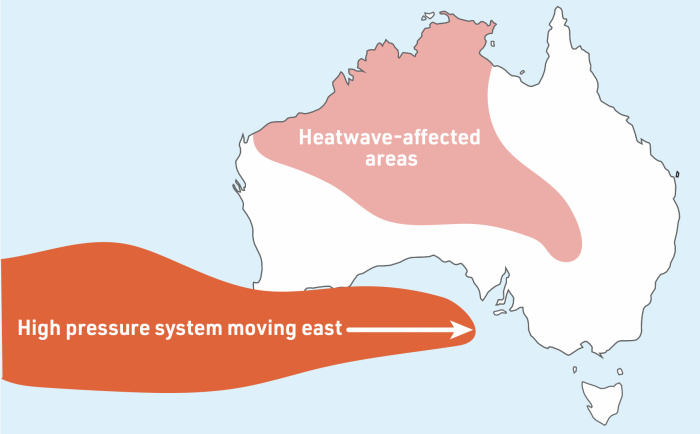
Heatwaves are the second deadliest natural hazard in Australia and can negatively impact infrastructure, agriculture and ecosystems.
Western Australia experienced a series of heatwaves from 2021-2022.
The first was in the Pilbara from 30th November to 6th December 2021, when Marble Bar experienced six continuous days of maximum temperatures above 45.5∘C, 5∘C warmer than average.
The heat was associated with low pressure across northern Australia and a high-pressure ridge to the south. The high eventually moved east, leading to individual daily maximum temperatures more than 8∘C warmer than normal occurring across much of southern Western Australia from 8th to 11th December.
Further heatwaves occurred in the Pilbara, starting on 17th December and 12th January, and in the south-west, starting on 23rd December and 18th January.
These led to several records, including the equal hottest day in Australia of 50.7∘C, at Onslow on 13th January, and Perth recording six days in a row above 40∘C.
The ARC Centre of Excellence for Climate Extremes is researching links between heatwaves and weather systems, soil moisture and climate change.
